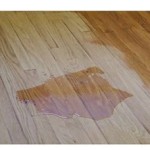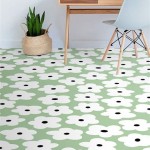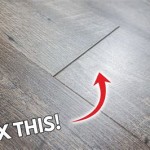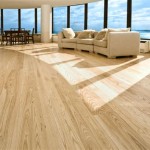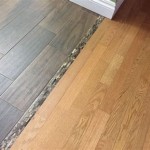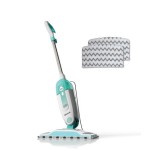How Can You Tell If Laminate Flooring Is Good Quality?
Laminate flooring has become a popular choice for homeowners and businesses alike due to its affordability, durability, and aesthetic appeal. However, not all laminate flooring is created equal. Distinguishing between a high-quality product and a low-quality one is crucial to ensure lasting performance and avoid potential disappointments down the line. Several factors contribute to the overall quality of laminate flooring, and understanding these elements empowers buyers to make informed decisions.
Assessing the quality of laminate flooring involves examining various aspects, from its construction and surface finish to its resistance to wear and moisture. This article will delve into the key indicators of good-quality laminate flooring, providing a comprehensive guide to help discern between superior and inferior options. By focusing on these critical elements, individuals can confidently select a laminate floor that meets their specific needs and provides long-term value.
Understanding the AC Rating: A Measure of Abrasion Resistance
One of the most important indicators of laminate flooring quality is its Abrasion Class (AC) rating. This rating system, established by the European Producers of Laminate Flooring (EPLF), measures the flooring's resistance to abrasion, impact, and staining. The AC rating provides a standardized way to compare the durability of different laminate products.
The AC rating scale ranges from AC1 to AC5. AC1 laminate is suitable for light residential use, such as bedrooms with minimal foot traffic. AC2 is appropriate for general residential use, including living rooms and dining rooms. AC3 laminate is designed for moderate commercial use or high-traffic residential areas like hallways and kitchens. AC4 is ideal for general commercial use, such as offices and retail spaces. Finally, AC5 laminate is the most durable option, intended for heavy commercial use in areas with significant foot traffic like department stores and public buildings.
When selecting laminate flooring, it's crucial to choose an AC rating that aligns with the anticipated level of traffic and usage in the intended space. Opting for a higher AC rating than necessary will result in a more durable floor, potentially extending its lifespan. Conversely, selecting an AC rating that is too low for the intended use will likely lead to premature wear and tear, requiring replacement sooner than expected.
The AC rating is typically displayed on the laminate flooring packaging or product specifications. This rating provides a clear indication of the floor's ability to withstand everyday wear and tear, making it a valuable tool for assessing its overall quality and suitability for a particular environment.
Examining the Core Board Density and Composition
The core board is the foundation of laminate flooring, providing structural integrity and stability. A high-quality core board is dense and resistant to moisture, contributing significantly to the floor's overall durability and longevity. The core board typically consists of High-Density Fiberboard (HDF) or Medium-Density Fiberboard (MDF).
HDF is generally considered superior to MDF due to its higher density and greater resistance to moisture. A denser core board is less susceptible to swelling or warping when exposed to humidity or spills. This is particularly important in areas prone to moisture, such as kitchens, bathrooms, and basements. The density of the core board is usually measured in kilograms per cubic meter (kg/m³), with higher values indicating greater density and improved resistance to moisture.
In addition to the density, the composition of the core board also plays a role in its quality. Some manufacturers use formaldehyde-free resins to bind the wood fibers, which can improve indoor air quality and reduce potential health risks. Look for laminate flooring that is certified by organizations like CARB (California Air Resources Board) or complies with European standards (E1 or E0) to ensure low formaldehyde emissions.
To assess the quality of the core board, examine the edges of the laminate planks. A tightly packed, smooth edge indicates a dense and well-constructed core. Conversely, a frayed or loosely packed edge suggests a lower-quality core that may be more prone to moisture damage. Asking the supplier about the core board's density and composition is also recommended to ensure it meets the required standards for durability and moisture resistance.
Evaluating the Surface Layer and Texture
The surface layer of laminate flooring is the visible part that determines its appearance and feel. This layer consists of a decorative paper that replicates the look of wood, stone, or other materials, protected by a transparent wear layer. The quality of the surface layer affects the floor's aesthetic appeal and its ability to resist scratches, stains, and fading.
A high-quality wear layer is essential for protecting the decorative paper from damage. This layer is typically made of aluminum oxide, a durable material that provides excellent resistance to abrasion. The thickness of the wear layer is measured in mils (thousandths of an inch), with a thicker wear layer offering greater protection. For residential use, a wear layer of 12 mils or higher is recommended, while commercial applications may require a wear layer of 20 mils or more.
The texture of the surface layer also contributes to the overall quality and realism of the laminate flooring. Embossed-in-register (EIR) texture is a technique that aligns the surface texture with the underlying image, creating a more authentic and natural look. Laminate flooring with EIR texture closely mimics the feel of real wood, enhancing its aesthetic appeal. Look closely at the surface of the laminate and feel for variations in texture that correspond to the wood grain or stone pattern.
Furthermore, the quality of the decorative paper itself influences the appearance of the floor. High-resolution printing and realistic color variations contribute to a more natural and visually appealing look. Examine the pattern repeats closely; longer, more varied repeats indicate higher quality as the design is less likely to become repetitive and obvious across the entire floor. The surface should also be resistant to fading from UV exposure. Choosing a laminate with UV protection can help maintain its color and appearance over time.
Assessing the Locking System
The locking system is the mechanism that holds the laminate planks together, creating a seamless and stable floor surface. A high-quality locking system is easy to install, secure, and resistant to gapping or shifting over time. Several types of locking systems are available, with varying degrees of strength and ease of use.
Click-lock systems are the most common type of locking system used in laminate flooring. These systems typically involve tongue-and-groove connections that snap together easily without the need for glue or nails. The quality of the click-lock system depends on the precision of the milling and the strength of the locking mechanism. A tight and secure connection is essential to prevent gaps from forming between the planks.
When evaluating a locking system, look for a system that is easy to engage and disengage. The planks should snap together smoothly and securely, without requiring excessive force. The locking mechanism should also be durable and resistant to breakage. Some manufacturers use reinforced locking systems with added strength to prevent separation or damage over time. These are often made of materials such as plastic polymers or reinforced wood products.
The tightness of the joints between planks after installation is a key indicator of a good quality locking system. These joints should be nearly invisible and flush. A poor locking system will exhibit visible gaps, which will allow moisture to penetrate underneath the laminate and cause long-term damage. In addition, a flawed locking system will allow the laminate floor to shift and move under foot.
Considering Thickness and Plank Dimensions
The thickness and dimensions of laminate planks contribute to their overall stability and feel underfoot. Thicker planks generally offer greater stability and a more solid feel, while larger planks can create a more spacious and luxurious look. The appropriate thickness and dimensions will depend on the specific application and personal preferences.
Laminate flooring thickness typically ranges from 6mm to 12mm. Thicker planks, such as 10mm or 12mm, are generally recommended for high-traffic areas or when installing over uneven subfloors. Thicker planks are also less likely to flex or bend under pressure, providing a more solid and comfortable feel underfoot. Choosing a thicker board enhances the sound absorption properties of the laminate floor, and results in less hollow sounds when someone is walking on it.
The dimensions of the planks also influence the appearance and feel of the floor. Wider planks can create a more open and spacious look, while narrower planks can add a more traditional or rustic feel. Longer planks can also create a more continuous and streamlined appearance, minimizing the number of visible seams.
When selecting plank dimensions, consider the size and shape of the room. Larger rooms can typically accommodate wider and longer planks, while smaller rooms may benefit from narrower and shorter planks. Ensure that the dimensions of the planks are proportional to the overall size of the room to create a balanced and aesthetically pleasing look. Also consider the subfloor; wider, longer planks might require a more even subfloor to prevent flex and ensure stability.
Considering the Warranty and Manufacturer Reputation
The warranty and reputation of the manufacturer are important factors to consider when evaluating the quality of laminate flooring. A generous warranty indicates that the manufacturer stands behind its product and is confident in its durability and performance. A reputable manufacturer is more likely to use high-quality materials and adhere to strict quality control standards.
Laminate flooring warranties typically cover manufacturing defects, wear resistance, and fading. The length of the warranty varies depending on the product and manufacturer, with longer warranties generally indicating higher quality. Read the warranty carefully to understand the specific coverage and any limitations or exclusions.
Research the manufacturer's reputation and track record before making a purchase. Look for customer reviews and ratings to gauge the overall satisfaction of other buyers. A manufacturer with a positive reputation is more likely to provide high-quality products and excellent customer service. Check online forums and industry publications to gain insights into the manufacturer's performance and reliability. A long history of positive customer experiences and industry recognition are strong indicators of a reputable manufacturer.
Also, inquire about the manufacturer's certifications and affiliations. Look for certifications from organizations like the FloorScore program, which ensures that the laminate flooring meets stringent indoor air quality standards. Participation in industry associations like the North American Laminate Flooring Association (NALFA) demonstrates a commitment to quality and best practices. These affiliations and certifications provide additional assurance that the laminate flooring has been tested and verified to meet specific performance and safety standards.

How To Determine Laminate Floor Quality Flooring Singapore

How To Determine The Quality Of Your Laminate Flooring Singapore

How Do You Know It S Time To Replace Your Laminate Flooring Southside Building Center

Vinyl Plank Vs Laminate Flooring Which Is Right For You Onflooring

How To Tell If Engineered Hardwood Is Good Quality Signs Of High Wood Floor

How To Spot Quality Laminate Flooring A Buyer S Guide Alexandria Gainesville And Leesburg Va Floor Advisor

How To Choose Quality Flooring Singapore Laminate

Determining The Direction To Lay Install Hardwood Laminate Or Luxury Vinyl Plank Flooring

Knowledge What Is Laminate Wood Flooring Interio Floors

7 Crazy Myths About Laminate Flooring Debunked
Related Posts


